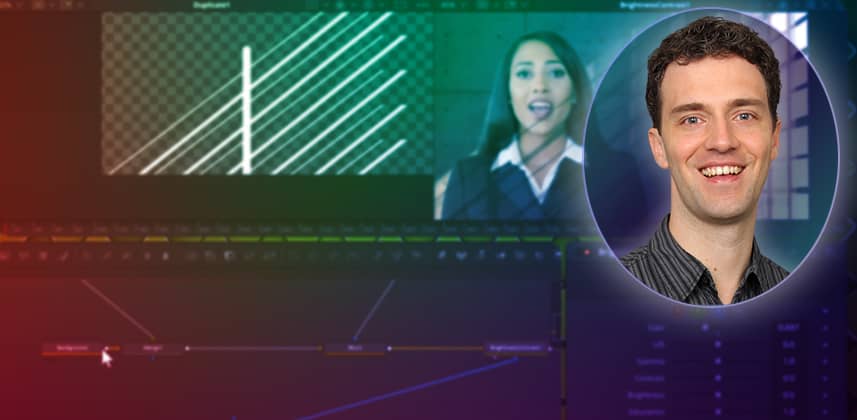| Series |
|---|
Part 2: Edge Masks For Improved Compositing and Lighting Effects
It’s one thing to set up a mask in a key or a composite that gets 95% of the job done, and it’s quite another to finesse that final 5% for seamless integration with the rest of the shot.
In part 2 of our series, we’ll look at many tips and tricks for creating advanced custom edge masks for better compositing and light effects. We will target the edges precisely with modified filter effects and use directional blurs and transforms to create custom shapes from existing masks.
These can really help with selling realistic-looking light wraps and fall-offs when compositing an element into a shot with strong directional light sources.
Targeting Only the Edges with Custom Edge Masks
In part one of this series, we looked at the most basic ingredients, like blur and color corrections, that can be used to manipulate masks. Now, let’s take it to the next level and build some custom edge masks.
A Sobel filter can help us target an edge precisely to fix edge discolorations or blur edge pixels. And when you combine it with an erode/dilate node, you can shift the position of the edge inwards or outwards.
“A Sobel filter takes neighboring pixels and subtracts them from a middle pixel, and the result is, if they’re all equal, then they cancel each other out, and the filter gives back black. If there’s a change, then the filter gives back a value, and if you look at the alpha channel, the change is just precisely where the edge is.
– Bernd
Simulating Light Wraps and Falloff
Adding directional effects within an edge mask helps us simulate the direction of light falling on a subject and how far it reaches. There are many ways to approach this, but limiting blur effects to one axis, using a directional blur tool, or even scaling a mask in one dimension can help us create custom variable edge masks.
Finally, I demonstrate how to modify a mask with a custom shadow pattern that we can quickly draw with a few polygons. We will then blur, transform, and warp that pattern to turn it into a believable shadow effect, falling on our subject and adding another layer of detail to our final composite.
Key takeaways from this Insight
By the end of this Insight, you should understand how to:
- Use a Sobel Filter to target edges precisely
- Use directional blurs to build masks for directional light effects
- Use one-dimensional scaling to create edge masks with variable widths based on the subject
- Build your own light and shadow patterns with simple drawing techniques in Fusion
External Links
- Sobel Operator – Understand the technical background of Sobel Operators (Wikipedia)
Related Mixing Light Insights
- Expert Tips For Rotoscoping in DaVinci Resolve Fusion – I’ve also previously shared this Insight on how to approach rotoscoping like a professional VFX artist, which will also help improve your composites.
Questions or Comments? Leave a comment!
Do you have additional ideas on how to manipulate your masks? Do you sometimes draw or import patterns to create light effects? I’d love to hear about it!
– Bernd
Member Content
Sorry... the rest of this content is for members only. You'll need to login or Join Now to continue (we hope you do!).
Need more information about our memberships? Click to learn more.
Membership optionsMember Login


